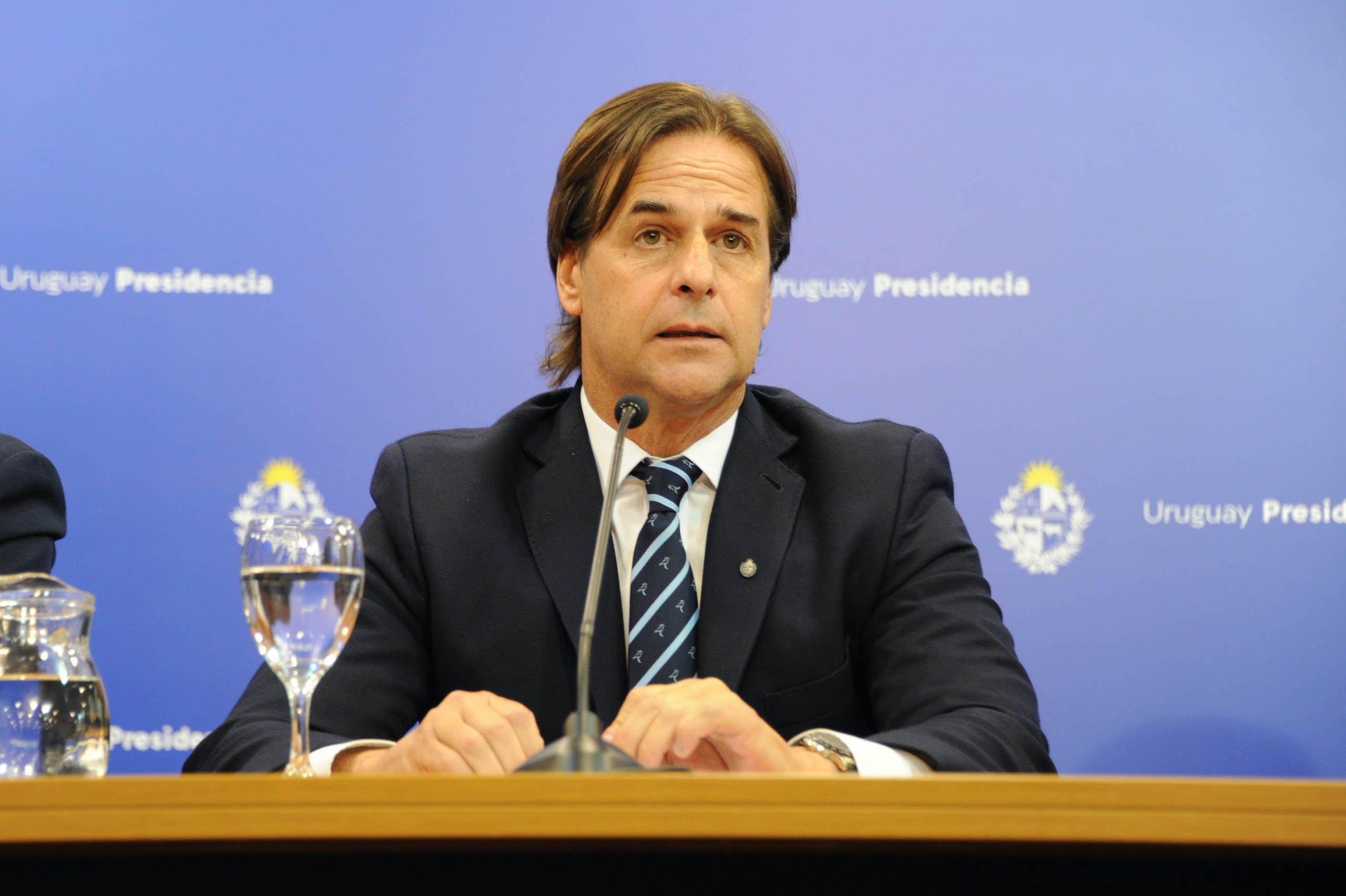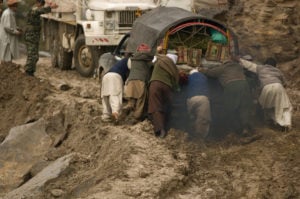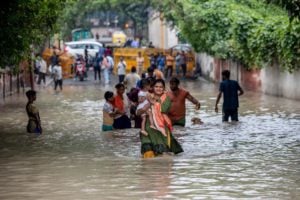Since May, the tap water received by the 1.7 million inhabitants of Montevideo and its metropolitan area has contained more than double the amount of sodium permitted by local regulations.
Authorities have described the situation in the Uruguayan capital as exceptional, but have said this will continue until there is enough rainfall to replenish the stricken Paso Severino reservoir, which supplies 60% of the country’s population.
Uruguay is currently experiencing one of its worst water crises ever recorded, following three years of extremely low rainfall that has reduced freshwater reserves to historic lows.
To address a dramatic shortfall, the Uruguayan government has resorted to extreme measures, using saltwater from the Río de La Plata to supplement freshwater supply from the Santa Lucía River, on which the Paso Severino is located, 75 kilometres north of Montevideo. This has raised levels of sodium and chlorides in the supply, and drawn criticism from experts and figures across the political spectrum, due to the potential health risks of this increased salinity.
The official response to the crisis has also been met with demonstrations by citizens and trade unions, while national demand for bottled water has grown significantly, leaving authorities scrambling for viable solutions to ensure drinking water supply.
Various experts consulted by Diálogo Chino said that Uruguay’s water deficit – the most serious in the last 50 years – is unlikely to be a temporary phenomenon that will be solved by increasing rainfall, with climate change and record-breaking drought the deeper causes of the problem.
In a recent open letter, the Uruguayan Association of Limnology (the study of inland waters) reported that problems related to declining freshwater quality and quantity “have increased in frequency and magnitude in the last decade”. The intense drought, associated with the presence of the La Niña weather phenomenon since 2020, the association said, “conditioned the collapse of water reserves for human consumption” in the capital city of Montevideo and the metropolitan area.
The president of the association, Franco Teixeira de Mello, described drought as exacerbating water problems in terms of quantity, but climate change has done so in terms of quality. He said the situation is not the result of an isolated event: “We have to be prepared because it is not something circumstantial.”
“The water crisis is the result of the lack of implementation of environmental policies linked to the care of water courses, and the drought accentuates this problem,” Teixeira de Mello added.
According to geographer Marcel Achkar of the University of the Republic, Uruguay’s water crisis has been exacerbated not only by climate change, but also by the absence of a land-use plan to protect resources and maximise water production in the Santa Lucía River basin. “Most of the actions taken in the basin in recent decades – agricultural, livestock and industrial production – have led to a decrease in its water yield,” he said.
‘Consumable but not potable’
The Paso Severino reservoir has a normal capacity of 67 million cubic metres of water, but by June had reached its lowest ever levels, at only 3.5 million cubic metres, explained Edgardo Ortuño, director of the national water utility OSE, and member of the Broad Front, Uruguay’s main opposition party. On 10 July, the government reported that the reservoir level had declined to under 1.9 million cubic metres.
“The Aguas Corrientes treatment plant [which services the entire Montevideo metropolitan area] ran out of sufficient reserves, so we have to take salt water from the Río de La Plata and supply the population with what the government calls ‘consumable but not potable water’,” Ortuño told Diálogo Chino in June.
Ortuño was referring to statements by Uruguay’s environment minister, Robert Bouvier, who said in recent weeks that OSE’s supply, which has seen its salinity increase, “is not potable in the perfect definition of potability, but it is drinkable and consumable.”
Bouvier echoed public health minister, Karina Rando, who said in May that “there is no health risk” in consuming tap water, but advised that people with hypertension, kidney or heart problems, and pregnant women to limit their consumption of it.
In late June, the country’s president, Luis Lacalle Pou, said the exceptional salinity levels were likely to continue for a further two months. His government recently authorised a temporary increase in the limits of sodium and chloride levels permitted in water supply, from 200 milligrams per litre to 440 mg/L for sodium, and 250 mg/L to 720 mg/L for chlorides – levels that have reportedly already been reached and exceeded on several days.
There have also been increases in the presence of trihalomethanes, a by-product of disinfection processes in tap water treatment. The Ministry of Public Health authorised OSE to increase fivefold the permitted level of these compounds, a move that caused controversy due to possible effects on pregnancies that exposure to them has been associated with.
Similar to the academics consulted by Diálogo Chino, Ortuño also pointed to droughts becoming increasingly frequent, affecting a greater area and lasting longer. “Far from being an exceptional situation, climate variability is here to stay,” he said, adding that a “medium- and long-term state policy” on water must be promoted to improve the management of Uruguay’s resources.
Ortuño said the construction of new reservoirs and infrastructure for drinking water treatment must be addressed urgently, including expediting a proposed dam in Casupá. This project, also located on the Santa Lucía River, has been on the Uruguayan government’s agenda since 2013 and would allow the damming of an additional 118 million cubic metres of water, at a construction cost of US$100 million.
Casupá, said Ortuño, is “the only alternative” for the supply of drinking water and “not having built it yet has been foolish”. In contrast, he described Neptuno – a proposed plant to collect and treat water from the Río de La Plata, and a private project promoted by the Lacalle Pou government – as “the worst of the alternatives” and an “economic pursuit”. While its initial investment would be made by a consortium of private companies, OSE would reportedly have to pay a fixed fee of US$41 million per year for the plant’s operation.
Daniel Greif, a civil engineer and former director of Uruguay’s first National Water Plan, launched in 2010, also criticised the decision of the current national government to go ahead with the Neptuno project instead of prioritising Casupá, for which there were already abundant studies confirming its effectiveness.
We have to take salt water from the Río de La Plata and supply the population with what the government calls ‘consumable but not potable’ waterEdgardo Ortuño, director of water utility company OSE
“Neptuno, which is neither original nor good, and which had already been discarded by OSE technicians in the metropolitan area’s master plan, was a solution that was discarded as complex and costly, because it does not solve the supply problems, increasing production but not storage,” Greif said.
Diálogo Chino sought comment on the water crisis from the Ministry of the Environment, but the ministry replied that the office of the presidency was now the only authorised spokesperson to report on the issue of drinking water in the metropolitan area. The Presidency did not respond to requests for comment.
New challenges
There is one aspect of the water crisis on which all the experts consulted by Diálogo Chino agreed, summarised by Greif: “The country should have been more prepared to face a situation like this.”
For Greif, although there are structural problems – the lack of capacity of OSE to face a drought – there have also been issues in crisis management, which have led to an unprecedented strain on the country’s water supply.
This is a position echoed by various social organisations, which have led numerous public demonstrations over the water crisis, with dozens of people voicing their discontent in the streets of Montevideo since the situation worsened. Some placards during protests have referred to the supply’s increased salinity. Others accused the government of prioritising big businesses’ water use ahead of citizens’ drinking supply, reading “It’s not drought, it’s looting” or “the people’s water is not for sale, it is defended”.
We have to change our way of thinking about water and understand that it is a finite, scarce and expensive resource, and that if we waste less, we will have moreRaul Viñas, Movement for a Sustainable Uruguay (MOVUS)
Raul Viñas, a meteorologist and member of the Movement for a Sustainable Uruguay (MOVUS), told Diálogo Chino that the measures taken by the government in the face of the water crisis “were not the right ones”.
Viñas sees four priority areas for solving drinking water supply problems: repairing water networks to avoid the huge losses that are being recorded; generating more water reserves from clean areas, by preventing agrochemicals and organic matter from reaching water courses; seeking new sources of fresh water; and better education around water use and conservation.
“We have to change our way of thinking about water and understand that it is a finite, scarce and expensive resource, and that if we waste less, we will have more,” Viñas said.
For geographer Marcel Achkar, the crisis exposes the need to understand that it is not possible to plan for the climate to behave as it has historically done. Furthermore, he added, the management of water resources must be rethought, to “design real plans with medium- and long-term goals, which are not just a set of good intentions.”










